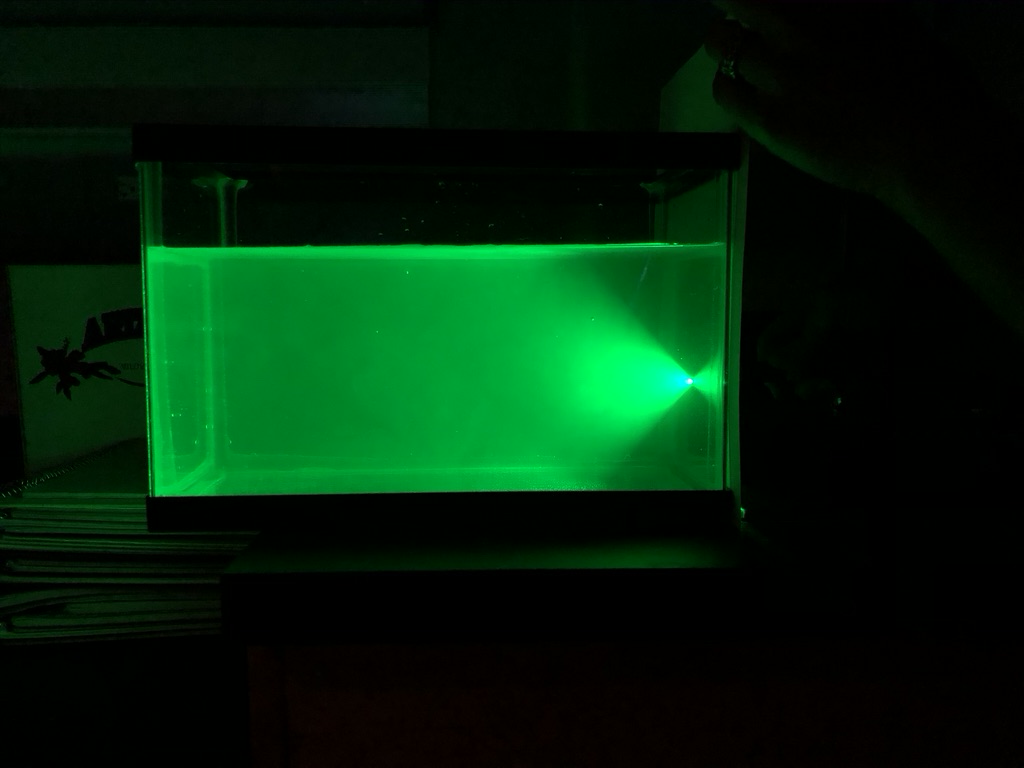Snell’s Window
Overview: Snell’s Window is the phenomenon that while underwater your vision is reduced to a 97 degree cone of visibility.
Supplies: Small fish tank, coffee creamer (or some sort of liquid diffuser), white sheet of paper, green laser
Objectives: Even though not underwater, you can still demonstrate the cone of light one would see
Setup:
- Fill fishtank about 3/4 full with water
- Add 1 drop of creamer, stir, and check diffuseness
- Add more drops of creamer as necessary
How to run the demo:
Place the sheet of white paper up against the side if the fishtank. Place the tip of the laser pointer up against the paper and turn it on.

What’s Happening?
Light moves at different speeds in different mediums. In the case of Snell’s window we are looking at light moving from air into water. When light enters the water from the air it refracts, or changes direction, in accordance with Snell’s Law. The law states that the ratio of sines of the angle of incidence and refraction are constant. So as the angle of incidence (the angle at which light enters a medium) increases, so does the angle of refraction (the angle at which the light bends in the second medium). At a certain angle of incidence, what is called the critical angle is reached. At the critical angle light is completely reflected and therefore no refraction occurs. Snell’s window is the cone of light where an underwater observer can see the refracted light up to the critical angle.

The demonstration uses the light source as the observers point of view, but shows the same effect without the observer having to immerse themselves in a body of water.
Learn more: (external links)

